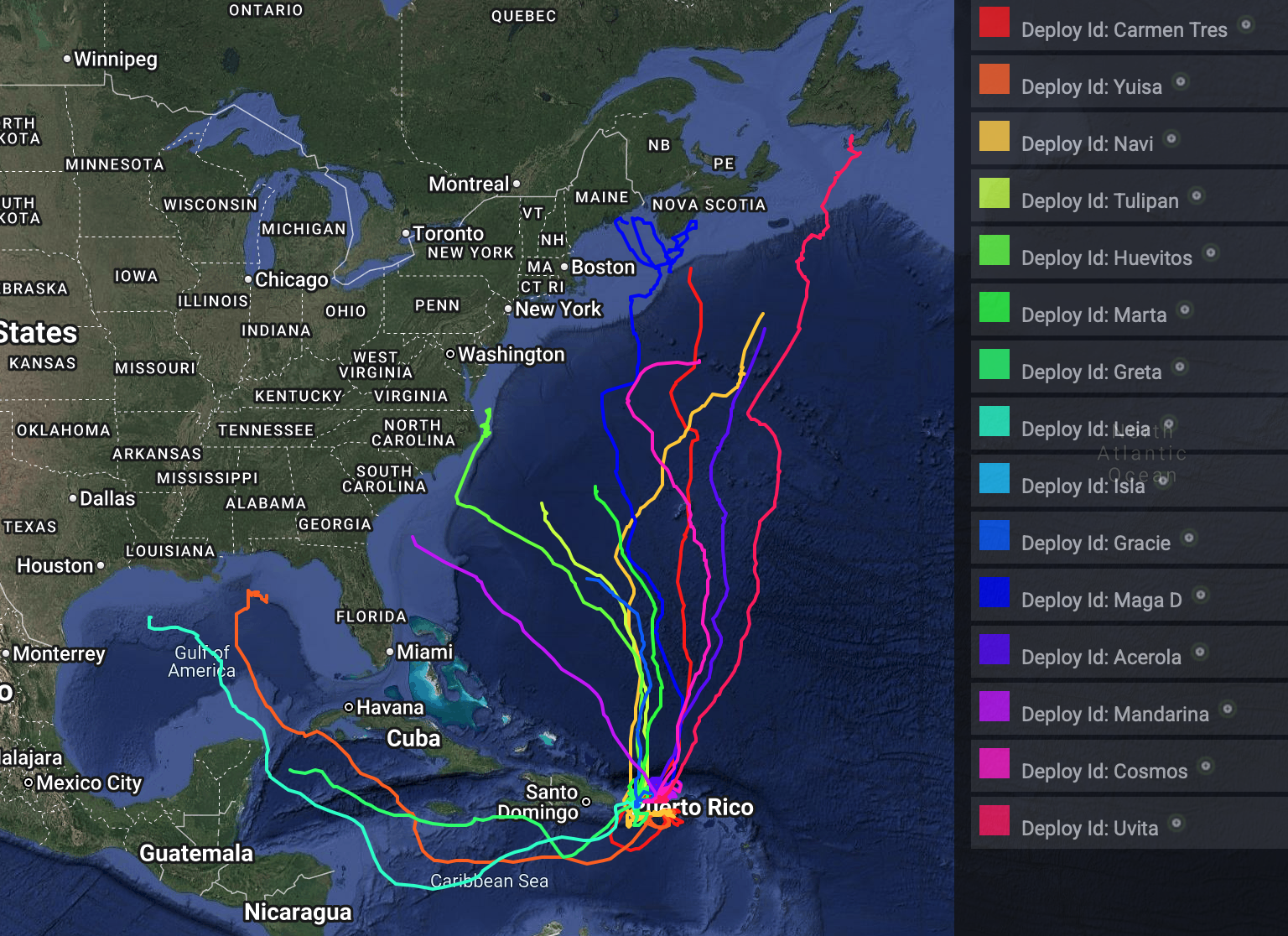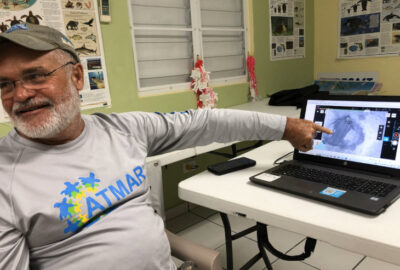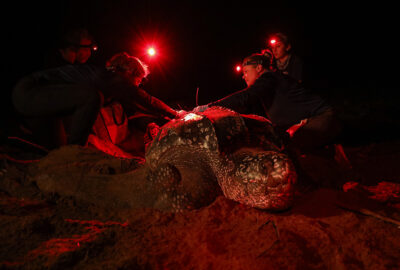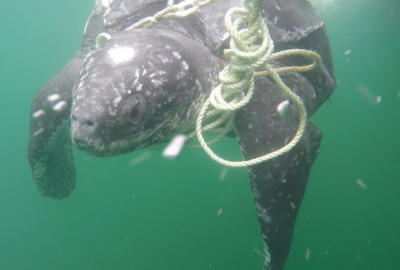Year Five of Tagging Leatherback Sea Turtles in Puerto Rico
Working closely with community partners, our team continued efforts to track nesting leatherbacks in the Caribbean.
By New England Aquarium on Wednesday, August 06, 2025

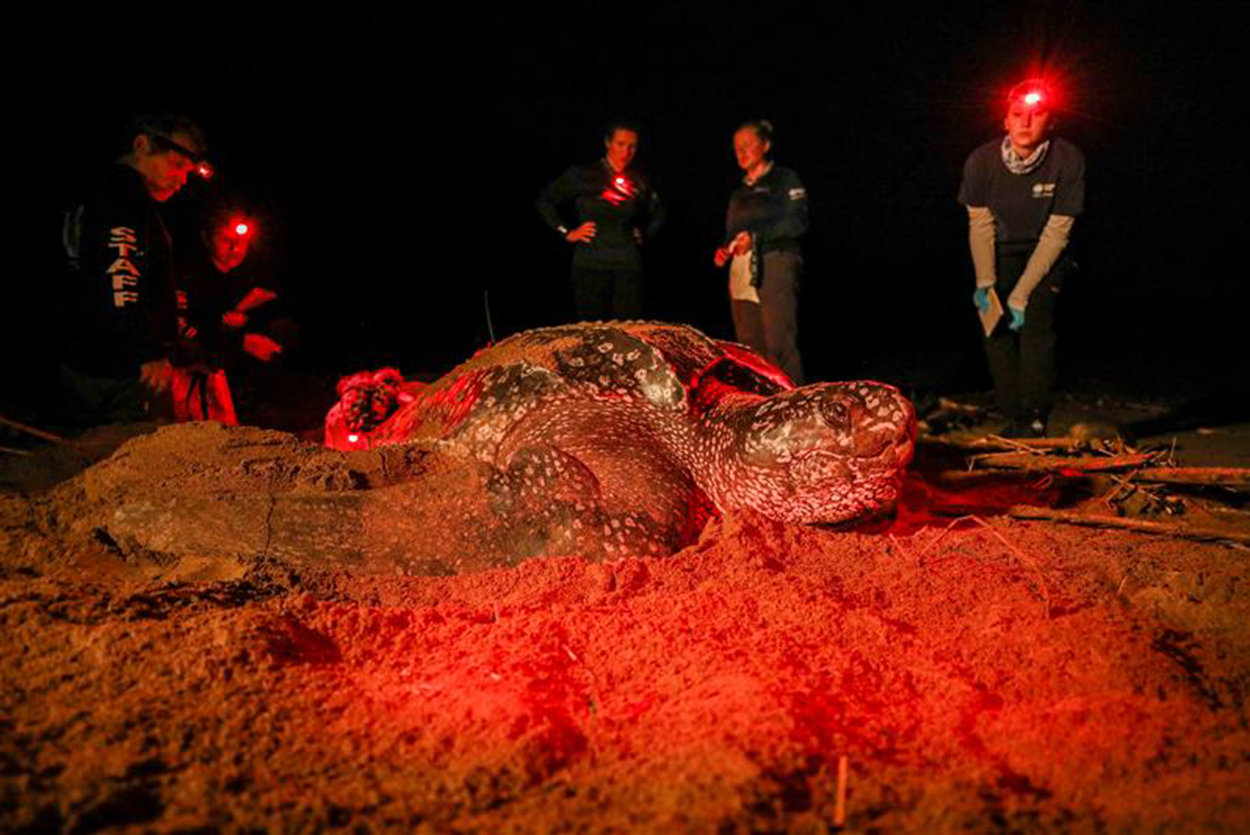
In May, scientists from our Anderson Cabot Center for Ocean Life headed to Puerto Rico for another season of leatherback sea turtle research. Puerto Rico hosts the highest number of leatherback nests in the United States, and their goal was to tag turtles nesting along the island’s shores.
The study, led by Dr. Kara Dodge, is in its fifth year. In partnership with community-led sea turtle conservation groups, the team utilizes satellite tag technology to collect data on the nesting habits and behaviors of female leatherback turtles, as well as their migratory patterns. As leatherback populations in the North Atlantic decline, these data are crucial for accurately assessing population status and identifying key areas to protect during the breeding and nesting season, as well as throughout the Northwest Atlantic during migration and feeding.
Read on to learn more about this year’s work!
Community conservation and collaboration
Thanks to funding from an anonymous donor, Kara and the team were once again able to visit three nesting sites—Dorado, Maunabo/Yabucoa, and Añasco–beaches along the north, southeast, and west coasts of Puerto Rico that typically represent the highest concentration of leatherback nesting activity.
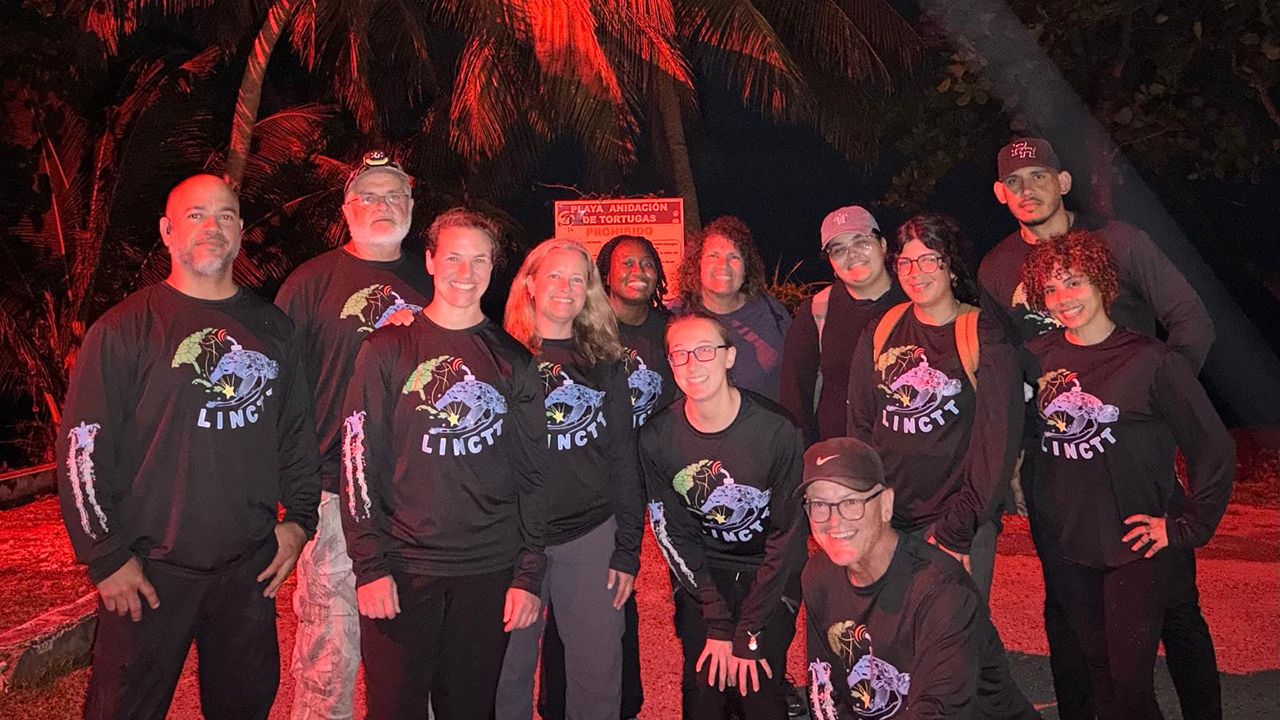
That meant the team continued their work alongside local partners across the island, including long-term collaborator Amigos de las Tortugas Marinas (ATMAR), as well as Puerto Rico Departamento de Recursos Naturales y Ambientales (DRNA), Chelonia, and Tortugas del Oeste. This season, the team was also joined by Arona Bender, a PhD student from Duke University, who conducted drone surveys at all three field sites to locate nesting leatherbacks. Arona worked with Luis Crespo from ATMAR to gain local knowledge on drone operations in Puerto Rico, and both Luis and Arona supported tagging operations with drone reconnaissance throughout the trip.
This research is a collaborative effort among Anderson Cabot Center researchers and other Aquarium staff, too. Biologists from our Rescue and Rehabilitation team, who work with cold-stunned sea turtles at our Sea Turtle Hospital in Quincy, MA, join the tagging efforts, getting first-hand experience with a species they don’t see during their day-to-day.
This year, Sarah DiCarlo was one of three Rescue team members who joined the trip. She spent a week in Dorado, working alongside collaborators from Chelonia. “They were performing a saturation study, monitoring the beaches overnight for two straight weeks to intercept every nesting female, and would alert us if there was a turtle so our team could attach a satellite transmitter to the leatherback,” Sarah said.
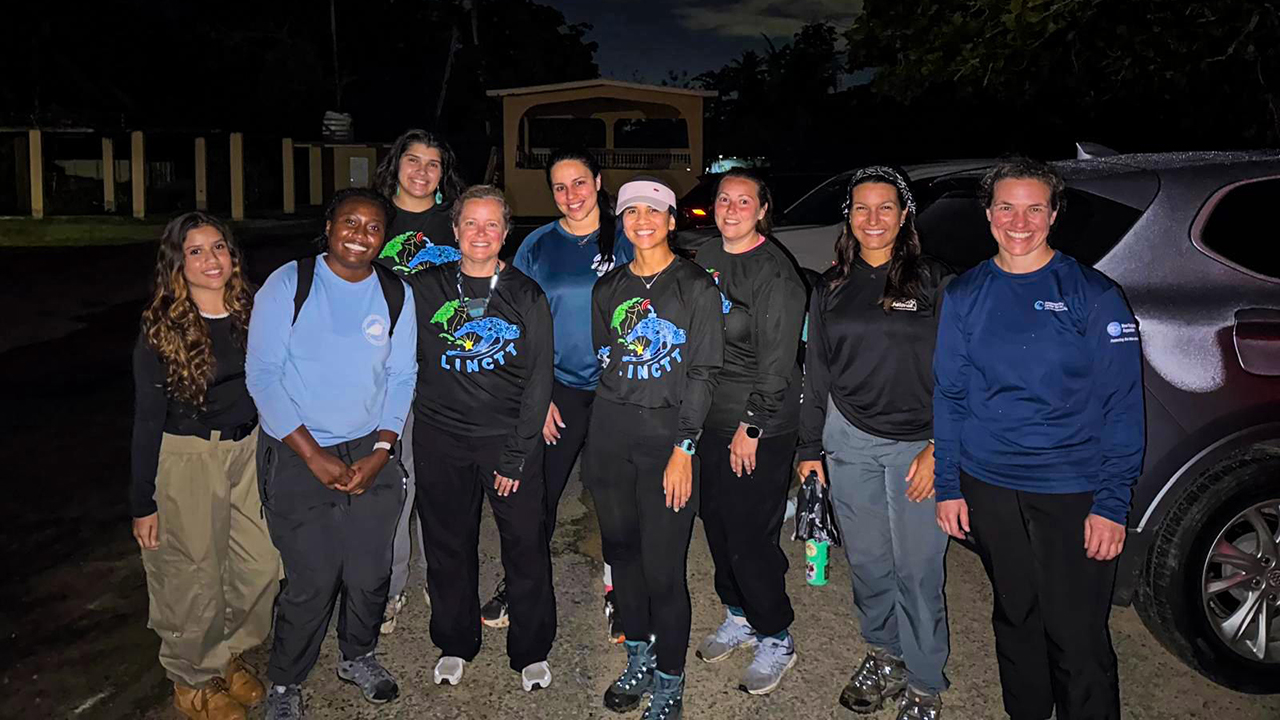
Tagging a nesting leatherback really is a team effort. Most nesting activity happens at night or in the early morning hours, and volunteers from the various local groups monitor beaches—either by foot or by drone—for turtles. When one is spotted, the tagging team goes into action. “Something that we all learn in Rescue is how to jump into action swiftly and know that situations are fluid,” Sarah said. “There’s a lot of anticipation.”
Before the team can begin tagging, they have to wait for the turtle to start laying eggs. At that stage, the turtle is in a state where people can touch her without disrupting the laying process. “Tagging takes five to ten minutes,” Sarah said. “We went over the gear and the tagging process during the day before we even arrived on the hot, buggy, pitch black beach with the awe of having a huge leatherback in front of us so that once we knew there was a turtle, we were prepared,” she added. While the Aquarium team attaches the satellite transmitter, the Chelonia team examines the turtle for identification tags (metal flipper tags and microchips), applies identification tags if the turtle has none, takes measurements, and marks the nest for further monitoring.
“I was most surprised by the sheer dedication of the volunteers in Puerto Rico who monitor the sea turtles there.” Sarah said, reflecting on her experience. “This is exhausting work, and they are so incredibly proud of what they are doing. Their enthusiasm was infectious.”
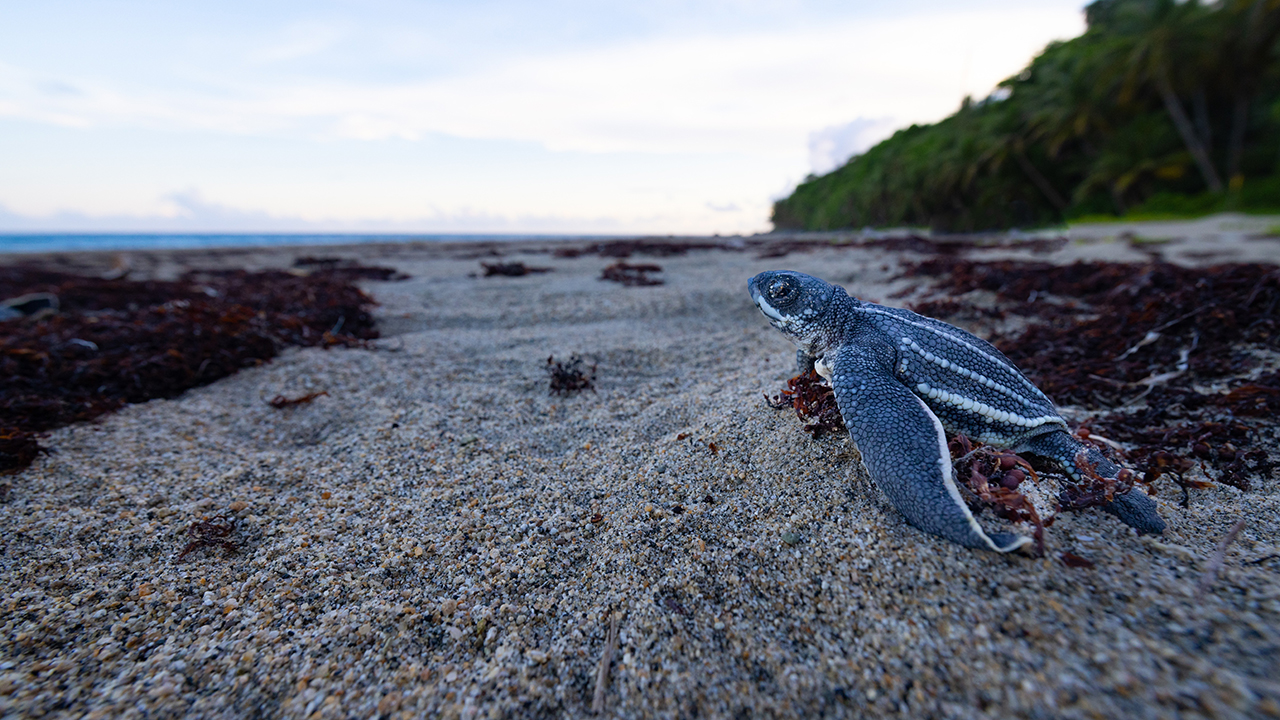
A chance encounter, and other exciting moments
This year, there were serendipitous collaborations, too.
“Some turtles visited beaches outside of their usual nesting neighborhood, which gave us an opportunity to tag turtles from other sites,” Kara said. One of those turtles was a leatherback that typically nests in Ponce on the south coast of Puerto Rico, an area of the island with a much smaller nesting population of turtles.
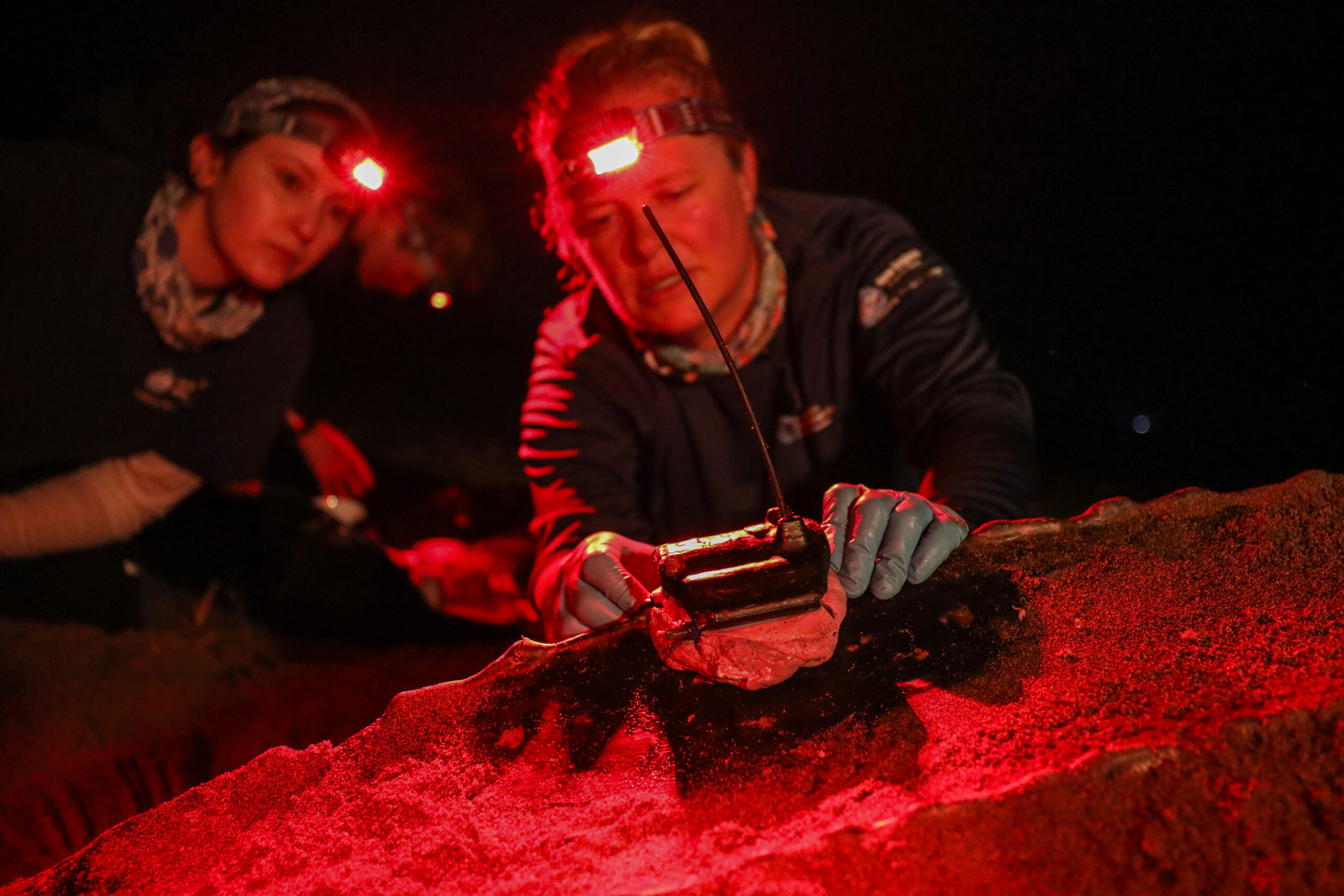
Guillermo Plaza Rodriguez, the director of conservation organization Tortugueros del Sur, was thrilled—though he was surprised to learn that “Navi,” a Ponce nester since 2018, was seen nesting in Yabucoa nearly 50 miles away. “He was super excited that we tagged a Ponce turtle, even though it wasn’t on his beach,” Kara said. “He sent us images and her whole nesting history, which includes back-to-back nesting in 2018–2019 and 2024–2025, which is really unusual for leatherbacks. He was so enthusiastic that we could not stop smiling about it. When Navi’s satellite tag showed her going back to Ponce, Guillermo was out there waiting for her.”
Other exciting moments during the 2025 season included tagging Maunabo turtle “Carmen” for the third time in four years; tagging four turtles in a single night in Añasco; and tagging turtle “Mandarina,” a Maunabo turtle that showed up to nest in Dorado! Mandarina was tagged by Chelonia scientist Julimar Nevárez, the first female scientist from Puerto Rico to lead satellite tag attachment on leatherback sea turtles. “One of our goals is to train local leaders in the tag attachment process, especially the next generation of scientists,” Kara said. “Juli has worked with us at all three field sites during the last two years, and she was more than ready to help lead tagging efforts in Dorado by the end of this trip. She did a fantastic job.”
“I learned how important relationship-building with the community is,” said Sarah, reflecting on her experience. “Watching Kara create lasting partnerships and respect each organization’s protocols was incredible, and it really demonstrates the importance of collaboration with local partners in the community who know their beaches and turtles the best.”
Satellite telemetry work was authorized under Permit DRNA 2025-EPE-009, DRNA-EPE-004, DRNA-EPE-012
Where are they now?
After finishing their nesting season, the 2025 cohort of tagged leatherbacks has been on the move, travelling to important feeding habitats along the Gulf of Mexico, Canada, and the US East Coast. Their migratory paths vary, but all will eventually lead to jellyfish-rich waters where they can pack on pounds and replenish their energy stores after several months of egg laying and migration. Five of last year’s tagged turtles are still transmitting data, and in August, the team expects to start seeing 2024 and 2025 turtles mixing in key feeding areas off of Canada and the US East Coast.
Keep up with the tagged turtles’ progress on our Sea Turtle tracker!
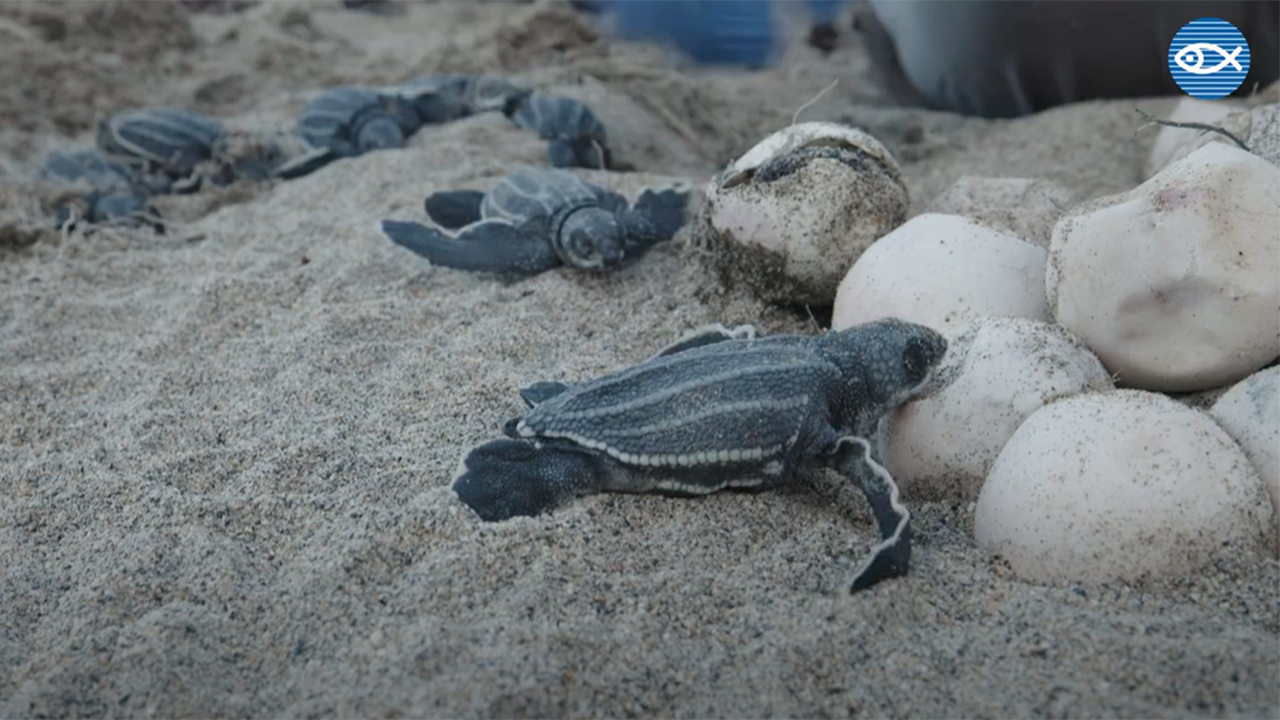
Learn more about leatherback turtles in Puerto Rico
Each year, our scientists at the Anderson Cabot Center for Ocean Life work alongside partners in Puerto Rico to tag nesting leatherback sea turtles. This collaborative effort expands monitoring, collects valuable nesting data, and helps us better understand the challenges faced by this endangered species. Video by Steve DeNeef

